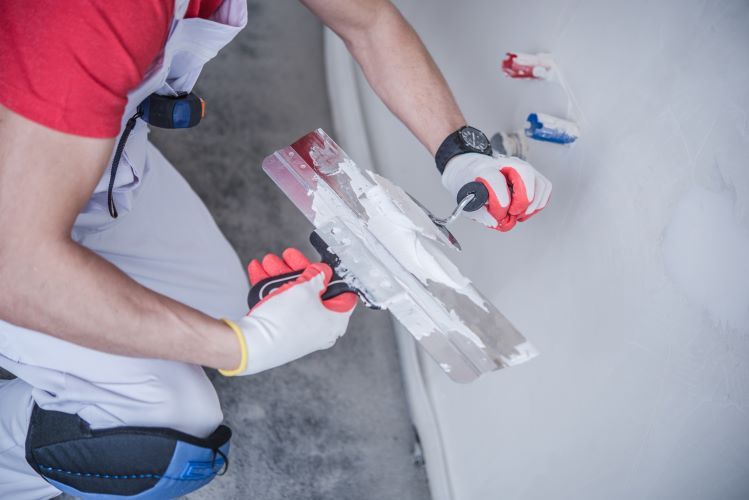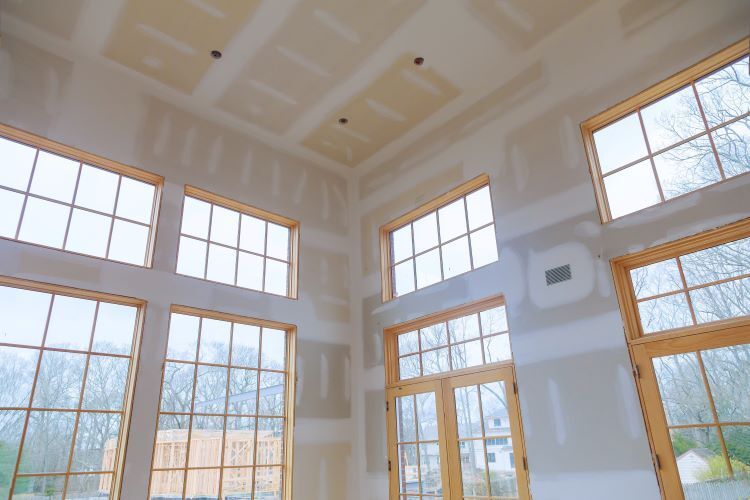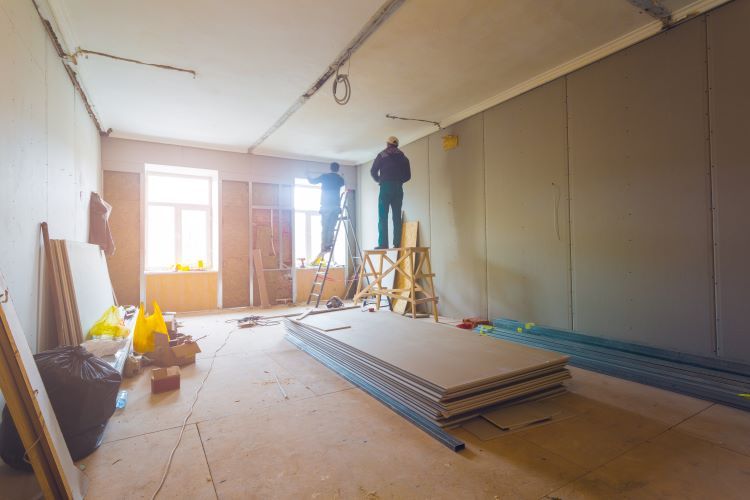The Purpose of Mudding Drywall

Drywall finishing is a vital process that turns bare walls into smooth, seamless surfaces ready for painting or other finishes. One of the essential steps in this process is mudding, also known as drywall compound application. At St. John's Drywallers, we know that proper mudding is crucial to achieving professional-quality results, whether you're working on a home renovation or a new construction project in St. John's, Newfoundland.
In this article, we will explore the purpose of mudding drywall, why it's important for a flawless finish, and how it contributes to the overall durability and appearance of your walls.
What is Drywall Mudding?
Mudding drywall involves applying a joint compound (or "mud") to the seams, joints, and fasteners of drywall sheets. The purpose is to fill gaps, hide imperfections, and create a smooth surface across the wall or ceiling. The mud is applied using a taping knife and then sanded down once it dries to eliminate any raised areas or rough spots.
1. Sealing Joints for a Seamless Look
One of the primary purposes of mudding drywall is to seal the joints between drywall sheets. When drywall panels are installed, there are visible seams where the panels meet. These seams need to be covered with tape and joint compound to create a continuous, smooth surface.
How mudding improves joint integrity:
- Conceals seams: Mudding covers the gaps between drywall panels, ensuring they don’t show through the finished surface.
- Applies tape: A thin layer of mud holds the drywall tape in place, which reinforces the seams and prevents cracks from developing over time.
- Sands smooth: Once dry, the mud can be sanded down to create a perfectly smooth transition from one drywall sheet to another, essential for painting or texturing the walls.
Without properly applied mudding, joints and seams will remain visible, creating an unprofessional and unfinished appearance. A seamless look is one of the key signs of a high-quality drywall job.
2. Hiding Fasteners for a Clean Finish
Drywall is secured to wall studs or ceiling joists using screws or nails, which can leave visible fastener heads on the surface. These must be covered to ensure a smooth, unblemished wall.
Mudding helps in concealing fasteners:
- Covers screws and nails: A small amount of drywall mud is applied over the fastener heads to hide them completely.
- Prevents dimpling: Proper mudding prevents "dimpling" around fasteners, ensuring that the heads do not create small indents on the surface.
By mudding over fasteners, drywall contractors can make sure the entire wall or ceiling looks uniform, without any signs of screws or nails.
3. Smoothing Imperfections for a Flawless Finish
Even with expert drywall installation, there may be minor imperfections, small cracks, or rough areas that need to be smoothed out. Mudding is essential in leveling out these surfaces to create an ideal base for painting or other wall treatments.
How mudding improves wall appearance:
- Fills in minor flaws: Mudding fills in any dents, cracks, or imperfections in the drywall surface, leaving it smooth and ready for finishing.
- Prepares for paint: A smooth surface is critical for achieving a flawless paint job. Paint applied over uneven or unsanded mudding will highlight imperfections, making them more noticeable.
- Supports textures: For textured finishes, mudding prepares the surface to hold the texture evenly, whether it’s a subtle knockdown pattern or a heavier stipple finish.
Professional mudding ensures that once your walls are painted or finished, they look smooth and free of blemishes.
4. Strengthening the Drywall’s Durability
Mudding doesn’t just improve the look of drywall—it also strengthens the structure of your walls and ceilings. By filling seams and imperfections, mudding provides extra reinforcement, helping your drywall stand up to normal wear and tear.
Mudding strengthens the following areas:
- Seams and corners: Taped and mudded seams and corners are less likely to crack or shift over time, providing long-lasting stability.
- Impact resistance: Well-mudded drywall is better able to resist minor impacts or pressure from daily activities, which helps prevent cracks or damage.
For homes in St. John's, where the changing weather can cause natural expansion and contraction in building materials, proper mudding is especially important in maintaining the long-term durability of your walls.
5. Creating a Professional-Grade Finish
The ultimate goal of mudding is to create a smooth, professional-grade finish that elevates the overall look and feel of your home. Whether you’re renovating your living room or building out a basement, expertly mudded drywall provides the polished, high-quality appearance that buyers and homeowners expect.
Benefits of a professional mudding job:
- Enhances visual appeal: Well-applied mud makes your walls look sleek, modern, and ready for any decorative finish.
- Increases home value: Homes with professional drywall work, including flawless mudding, tend to fetch higher prices on the market, as buyers are drawn to properties that require less maintenance and repair.
- Reduces future issues: Correctly mudded drywall reduces the risk of future cracks, dents, or seams becoming visible over time, which means fewer repairs down the road.
Conclusion: Mudding Drywall for the Perfect Finish
Mudding is an essential part of the drywall finishing process, ensuring that your walls look flawless and remain durable over time. From sealing joints to hiding fasteners, smoothing imperfections, and enhancing the overall look of your home, mudding plays a crucial role in any drywall project.
At St. John's Drywallers, we are experts in drywall finishing, including professional mudding techniques. Whether you need new drywall installed, existing walls repaired, or a complete renovation, our team is here to ensure your walls are finished to perfection. Contact us today to learn more about our drywall services and how we can help you achieve smooth, beautiful walls in your home or business.
You might also like


